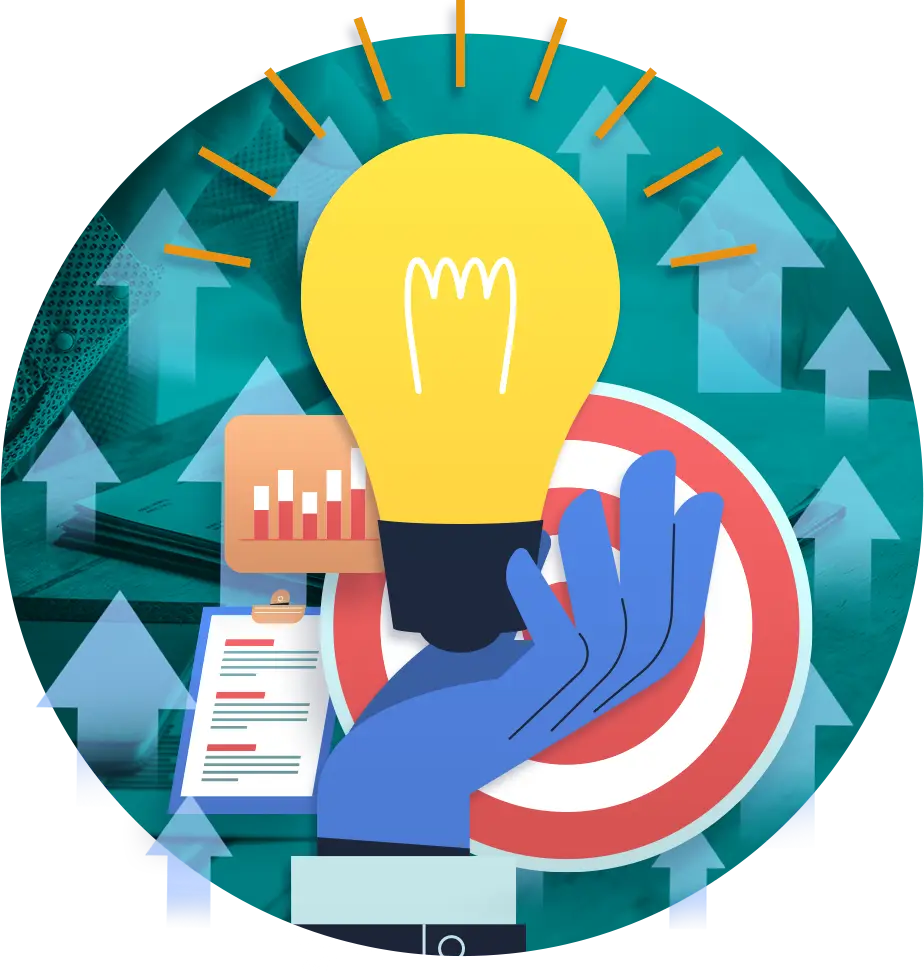Key Takeaways:
Understand the five stages of the marketing funnel.
Gain a deeper appreciation for the importance that the consideration stage plays in the customer’s journey.
Learn what factors help a customer move past the consideration stage and into the lower parts of the marketing funnel.
The customer journey isn’t always linear. But the five-stage marketing funnel is a helpful diagram to visualize the process from initial awareness of a product or service to the final stage of becoming a loyal customer and advocate for the brand. Join us as we break down each level of the marketing funnel and highlight why the consideration stage is extremely important to digital marketing success.
Understanding the Marketing Funnel
There are many variations of the marketing funnel circulating in the industry. But here at Technology Therapy® Group, we believe the five-stage version best explains the customer’s progression from casual browser to loyal customer. The funnel is divided into five key stages: awareness, consideration, conversion, loyalty, and advocacy, each representing a different phase of the customer’s journey.
1. Awareness
This is the top of the funnel where potential customers first become aware of your brand or product. It’s about grabbing attention through marketing campaigns, social media, or word of mouth.
2. Consideration
At this stage, potential customers are aware of your brand and start considering it as a possible solution to their needs. They compare your offerings with competitors, read reviews, and explore your products or services in detail.
3. Conversion
This stage is where the actual purchase happens. It’s the point when the customer has decided that your product or service is the right choice and takes the action to buy. Effective calls-to-action (CTAs) and a smooth purchasing process are crucial here.
4. Loyalty
After the purchase, the focus shifts to retaining the customer. This involves providing excellent customer service, engaging them with relevant content, and offering incentives or loyalty programs to encourage repeat purchases.
5. Advocacy
The final stage of the funnel is where satisfied customers become advocates for your brand. They recommend your products or services to others, often through word of mouth, social media, or reviews, effectively driving the funnel for new potential customers.
Why the Consideration Stage Matters
Consideration is an important part of the customer journey because it’s during this phase that you’re most likely to enjoy the customer’s focused attention. They are actively trying to make a good decision. At this point, providing them with a satisfying customer experience means providing them with content and interactions that answer their questions and make them feel valued.
7 Factors That Help a Customer Move Past the Consideration Stage
What goes into a customer’s decision-making process during the consideration phase? Here are seven factors that influence a shopper’s progression through the marketing funnel.
#1: Product or Service Specifications
Customer search often begins with the customer knowing they need a solution, but they don’t know what that solution is, exactly. During the consideration phase, the shopper will consider product or service offerings from several different brands. In addition to product listings, customers may watch videos, read blog posts, or engage with social media posts about specific offerings. Another important data source: customer calls to your store.
Knowing what products or services receive the most attention, as well as what customers want to know about these items, is a valuable customer insight that can be discerned from behaviors exhibited during the consideration stage. You can use these insights to better optimize your keyword selections for PPC marketing, and potentially be able to identify portions of your market that could flourish with just a little additional attention.
#2: The Customer Experience
Customer experience is a huge priority for modern shoppers. According to recent research from Salesforce, 88% of customers say the experience a company provides is as important as its products or services. During the consideration stage, customers try to determine what it’s going to be like doing business with you. Some of these considerations are logistical, like the following questions:
- Is your shopping cart easy to use?
- Is the returns policy easy to find?
- How much will shipping cost?
Other considerations are emotional:
- Do your customers feel respected?
- Is the person answering chat messages or emails friendly and professional?
- Is shopping from the business fun?
Again, you’ll find a deeper understanding of what shoppers are learning about the customer experience you provide during the consideration stage by examining your data. Another key point to consider: customer reviews. Potential customers will likely browse your reviews to see what others say about you before committing to purchase a product or service.
“88% of customers say the experience a company provides is as important as its products or services.”
Salesforce, State of the Connected Customer Report, May 2022
#3: Credibility of Business
Today, anyone can have a legit-looking website online in a couple of hours. It’s no wonder that consumers are afraid of being scammed. During the consideration phase, they’ll be looking for signs to reassure them that your business is reliable and trustworthy.
In addition to verification from third-party providers like Verisign, shoppers will look to information like a website’s About Us page or a social media channels to learn more about your company. Check your data to validate that this investigation is happening. If it’s not, it may be that shoppers are having a difficult time finding the answers they want on your website.
#4: Social Proof
A final factor during the consideration stage is social proof, or user generated content (UGC). This primarily comes in the form of reviews and testimonials, both on the digital channels you control (e.g., your website and social media), as well as on third party sites (e.g., Google Business listings and relevant review sites). Social proof reassures new shoppers that doing business with your company is a good idea. Per new research from Statista, 42% of online shoppers find reviews to be helpful as they determine whether or not to buy from a business.
Customers look at more than the number of stars when considering reviews. They also pay attention to whether or not your brand replies to individual reviews, and what those replies look like. There will always be negative reviews, but view these as an opportunity to connect with potential shoppers. Customers in the consideration stage will notice how you handle these negative review situations. It gives them a clue about how they’ll be treated if they have a problem.
“42% of online shoppers find customer reviews on the internet to be very helpful.”
Statista
#5: Comparing You Against Your Competitors
When shoppers are in the consideration phase, they often evaluate different options to find the best solution for their needs. This is when comparing your brand against competitors becomes a crucial factor. Provide clear, accessible information that highlights your unique selling points, superior quality, customer service, or better value to help these consumers in the decision-making process. Transparency, customer testimonials, and comparative guides can help establish your brand as the preferred choice and nudge potential customers closer to conversion.
#6: Engaging with Your Content
Engagement with your brand’s content — whether through reading blogs, watching videos, or following social media channels — plays a significant role in moving shoppers from consideration to decision. Content that educates, entertains, or provides value can build trust and establish your brand as an authority in your field. Regularly update your content channels with relevant, high-quality material to encourage potential customers to invest emotionally and intellectually in your brand. And refresh outdated content, so it’s optimized for search engines and still useful to your audience. You’ll find that they’re more likely to choose you over a competitor when it’s time to buy.
#7: Looking for Promotions or Deals
Promotions and deals are often the tipping point for shoppers in the consideration phase. Limited-time offers, discounts, and exclusive deals can create a sense of urgency and make the decision to purchase more compelling. By strategically offering promotions across your marketing channels, you appeal to your target audience’s desires and needs. You can then effectively motivate them to move past consideration and commit to purchasing.
Connecting with Consideration Stage Shoppers
The best platform to reach your customer is the platform your customer’s already on, and discerning this begins with an examination of your data. A TTG mentor can coach you on data analysis so you can better connect with your target buyers!





